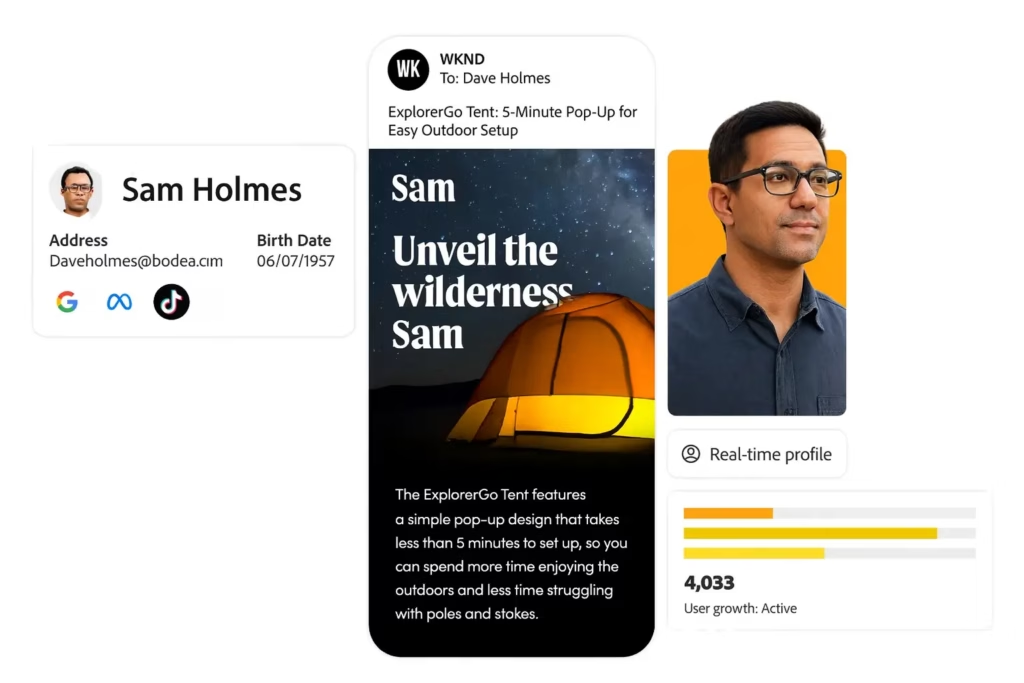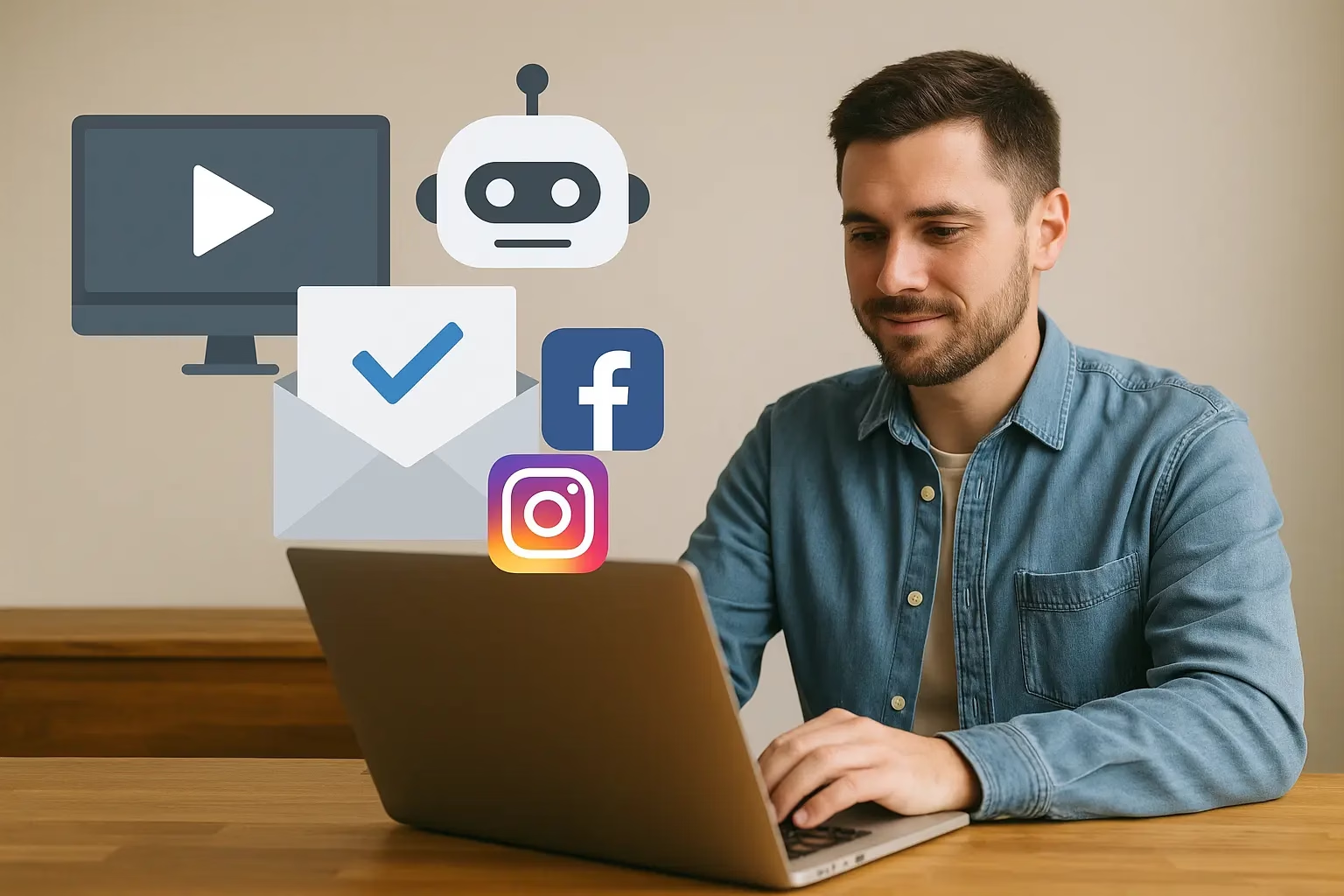Subtotal $0.00
In recent years, businesses in North America have dramatically shifted their advertising from traditional media—like print, radio, and TV—to digital platforms. This change follows where consumers spend their time and how they engage with brands. Today, the U.S. advertising market is booming – projected to reach $455.9 billion by 2025 – but most of that spend is online. Digital channels are taking over: for example, online ads already account for almost two-thirds of the U.S. market share. Analysts expect digital ads to make up 80% of all ad spending by 2029. Meanwhile, traditional formats like print and radio are declining. In fact, one source notes that “digital advertising’s explosive rise… has been mirrored by a continuous decline in traditional forms of advertising such as print and radio”.
This major shift is not just a trend; it reflects how and where customers look for products and information today.
Why Businesses are Moving Digital
Digital marketing offers clear advantages over traditional methods, helping businesses reach new heights:
-
Wider, More Targeted Reach: Online ads (social media, search, display) let companies pinpoint audiences by demographics, interests, and behavior. In contrast, a TV spot or billboard is broad and less flexible. Digital campaigns can target exactly the customers who are most likely to buy.
-
Measurable ROI: Every click, view, or purchase from an online campaign can be tracked in detail. Advertisers know which ads worked and can adjust. In fact, a recent article notes that digital marketing makes it much easier to “track your ROI more easily than traditional methods”. This data-driven approach means budgets are spent smarter.
-
Cost-Effectiveness: Setting up a digital campaign often costs less than a full TV or print campaign, and it can reach people globally. For instance, content marketing (a digital strategy) costs about 62% less than traditional marketing methods, yet it generates more customer engagement. Every dollar goes further online.
-
24/7 Global Availability: A website or social media profile never sleeps. Customers worldwide can find your business any time. Traditional ads run on schedules or in specific regions; digital assets are available round-the-clock.
-
Speed and Flexibility: Digital ads and content can be launched, edited, or paused within hours. If a campaign isn’t working, changes are quick. By contrast, print ads or commercials need long lead times and can’t be fixed easily. According to one expert, “digital marketing lets you get your message out faster… you can budget more effectively”- cyberoptik.net.
These benefits help explain why companies of all sizes are reallocating their budgets. For example, U.S. businesses are projected to increase their digital ad spending by ~13.9% annually through 2026. Consumers have also shifted online: video content has become dominant, with 91% of businesses using video as a marketing tool. All signs point to the fact that digital offers the most impact today.
Key Innovations Driving Growth
The digital age isn’t just about new channels — it’s powered by technology innovations that turbocharge marketing. Here are some cutting-edge trends helping businesses leap ahead:
-
Artificial Intelligence (AI) and Automation: AI tools are transforming marketing. From chatbots that answer customer questions instantly to algorithms that optimize ad spend, AI handles complex data tasks automatically. In fact, 2025 is dubbed “the year of AI agents,” as advanced assistants can analyze multimodal data (text, voice, images) to streamline marketing processes. For instance, global brands like Kingfisher have built AI agents to combine customer data and conversational AI, improving customer support and recommendations. The bottom line: AI makes marketing smarter and more efficient, letting small teams do big things.
-
Personalization at Scale: Thanks to data analytics and AI, brands can tailor content to each customer. Imagine an email or ad that changes based on the recipient’s interests — this is already happening. Personalized campaigns consistently outperform generic ones. One study highlights that using personalized digital content drives far higher engagement and ROI than traditional blanket advertising.

-
Social Media & Influencer Marketing: Social networks have become primary marketing platforms. Brands partner with influencers (popular social personalities) to reach engaged audiences. In the U.S., influencer advertising budgets are rising rapidly — projected to reach about $6.24 billion by 2025. Platforms like TikTok, Instagram, and YouTube allow businesses to create bite-size, authentic content. For example, short videos or reels showcasing a product can go viral and skyrocket sales. Social ads also offer precise targeting and measurable results, making them more effective than mass-market TV spots in many cases.
-
Shoppable Video & Social Commerce: Video is now a virtual store window. Innovations let viewers buy products directly from videos and social posts. For instance, YouTube and Instagram allow “shoppable” tags on videos. This trend is huge: social commerce revenue may surpass $1 trillion globally by 2028, and surveys show about 62% of people say online videos help them decide what to buy. Marketers can partner with video creators, tag products in live streams or ads, and turn entertainment into instant shopping.
-
Voice Search & Conversational Marketing: Voice assistants (Alexa, Siri, Google Assistant) are everywhere. In the U.S., roughly 35% of adults now own a smart speaker, and even more use voice on phones or TVs. This means people are often saying their searches instead of typing. Marketers must optimize content for natural language (longer, conversational keywords) and explore voice-activated ads or apps. Interestingly, one study found that half of smart-speaker owners have heard an ad via voice, and over half say they might respond to such adsnpr.org — suggesting voice is a promising new channel.
-
Augmented Reality (AR) & Virtual Reality (VR): AR and VR are adding “wow” to marketing. Big brands are already using them: IKEA’s AR app lets shoppers virtually place furniture in their homes, and Sephora’s AR features let customers “try on” makeup through their phone camera. These immersive experiences give customers confidence in their choices before buying. As the technology becomes widespread, expect more virtual showrooms, interactive ads, and gamified shopping experiences that set businesses apart.
-
Data & Advanced Analytics: Behind the scenes, smart marketers are using data modeling to fine-tune strategies. Tools like marketing-mix modeling (MMM) and attribution analysis help firms understand which channels actually drive sales. New open-source platforms (like Google’s MMM toolkit) make it affordable for all businesses to merge online and offline data. The result? Companies can allocate budgets based on evidence, not guesswork, squeezing more value from each marketing dollar.
-
Mobile-First Strategies: With 85-90% of North Americans owning smartphones, mobile is the main stage for marketing. Mobile-first designs, apps, and ads ensure brands are in customers’ pockets. Location-based marketing (geo-targeting) means a nearby restaurant can alert you to lunch deals just as you walk past. In effect, businesses are meeting customers wherever they are — whether on-the-go on mobile, on the couch with a tablet, or anywhere with a voice command.
Together, these innovations create a marketing ecosystem that is more interactive, efficient, and results-driven than ever before. Businesses combining them see real gains: for example, companies with active blogs see 55% more traffic to their websites, and SEO-driven websites convert at 14.6% vs just 1.7% for old-school cold-calling or direct mail. These numbers highlight how digital methods dramatically outperform many traditional tactics.
Benefits for Nonprofits and Small Organizations
The digital shift isn’t just for big brands — it offers huge opportunities for nonprofits and small businesses too. With limited budgets, these organizations can now reach global audiences and donors in ways that were impossible a decade ago:
-
Cost-Efficient Fundraising: Digital platforms let nonprofits stretch every dollar. Social media fundraising is very effective: for instance, 93% of nonprofits maintain a Facebook page, and over half run paid ads on social networks. These ads can target people by interest and location. Impressively, one analysis found the cost per donation via Facebook ads was about $106 on average, compared to $1,040 on TikTok — showing how targeted social ads yield much better returns for nonprofits than broad traditional campaigns.
-
Engagement & Storytelling: A nonprofit can tell its story widely through blogs, videos, and email. Updates and stories shared on Instagram, Twitter, and email newsletters keep supporters engaged year-round. For example, 85% of nonprofits worldwide use Instagram, and they post nearly five times per week to connect with donors. This ongoing digital presence builds community in a way that a single annual brochure cannot.
@changedotorg “What happened to our client is every parent’s worst nightmare.” Roblox is facing lawsuits over child safety concerns, and a petition calling for the removal of CEO David Baszucki is gaining traction. A Chicago law firm says it represents 400+ minors who were allegedly exploited on the platform. Roblox cites new parental controls, AI age checks, and moderation tools as ways it is working to protect children, while critics say more needs to be done. To read or sign the petition, head to the link in bio. #Roblox #OnlineSafety #Gaming ♬ original sound – Change.org
Example of how Change.org keep their supporters updated on social media
-
Targeted Outreach: Digital marketing allows nonprofits to reach specific segments (e.g. young professionals, retirees, local communities) with relevant messages. They can run a local Facebook ad for an event only in the nearby county, or a search ad that appears only when people Google related causes. This precision outreach was not possible with old-school radio or TV spots.
-
Data-Driven Improvement: Even small charities can track what works. With analytics, a nonprofit can see which blog post drew more volunteers, or which email subject line got more donations. These insights lead to smarter campaigns. Over time, nonprofits that adopt digital strategies find their fundraising efficiency and impact rising each year.
In short, digital marketing levels the playing field. Nonprofits with lean teams can access the same tools — social ads, content marketing, SEO, email automation — that big corporations use. This means that even modest organizations can achieve significant growth in donors and awareness.
Bringing It All Together
The data is clear: North American businesses and nonprofits are thriving by embracing digital marketing. Companies now combine SEO, social media, email, video, and cutting-edge tech (AI, AR, voice, etc.) to attract and delight customers. Traditional advertising still has its place (TV and print can boost brand awareness), but it’s no longer the center of the strategy for most organizations.
At WeJob, we understand these trends firsthand. We are a nonprofit organization that provides affordable, professional digital marketing services to businesses and especially nonprofits. Our experienced team knows how to use the latest tools and platforms — from creating engaging social content and search-optimized websites, to running targeted online ad campaigns and measuring results — to help organizations grow their impact.
If you’re ready to take your marketing to the next level, WeJob can help. We would love to apply our best digital practices to your mission or business. To get started, you can schedule a consultation today. Let us show you how tailored digital strategies can expand your audience, boost engagement, and achieve your goals.

